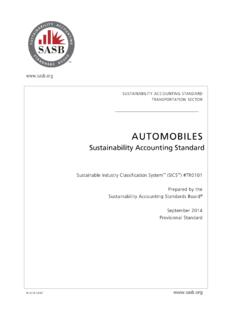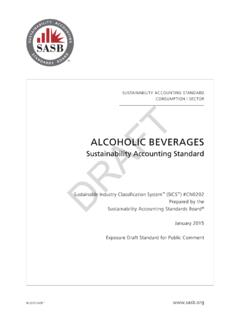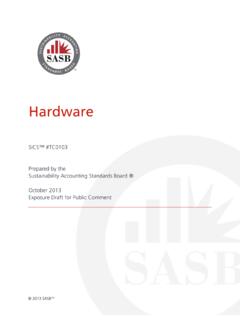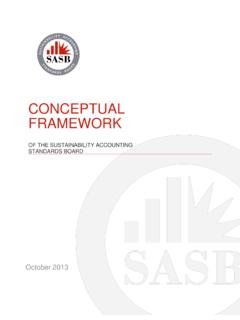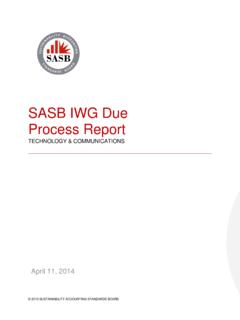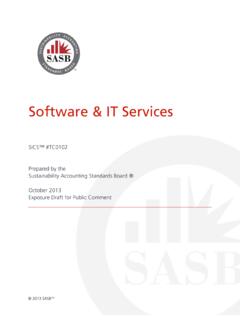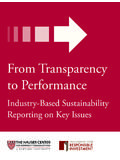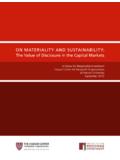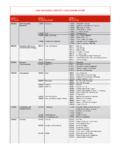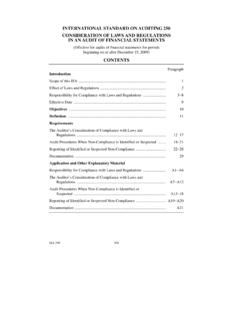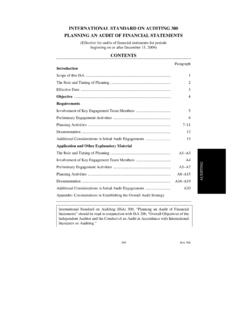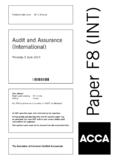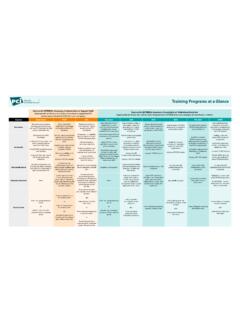Transcription of The Need for Sector-Specific Materiality and ...
1 8 Journal of Applied Corporate Finance Volume 24 Number 2 A Morgan Stanley Publication Spring 2012 The Need for Sector-Specific Materiality and sustainability reporting Standards* Note: The authors would like to acknowledge the invaluable research assistance of Arturo Rodriguez, SASB, in reviewing 2011 Form 10-K filings for companies in 6 Terms such as sustainability , environmental, social, and governance, and cor-porate social responsibility are frequently used interchangeably to describe similar Reports Statistics, , accessed April Eccles, Robert G., Michael P. Krzus, and George Serafeim. Market Interest in Nonfinancial Information, Journal of Applied Corporate Finance 23, no. 4 (Fall 2011).BTby Robert G. Eccles, Harvard Business School, Michael P. Krzus, Mike Krzus ConsultingJean Rogers, sustainability Accounting Standards Board, and George Serafeim, Harvard Business School*he number of reports published by corporations around the world that include sustainability information is growing.
2 According to data from , a repository of over 39,000 reports by 8,930 different companies in 159 coun-tries, the global output of sustainability1 reports increased from 26 in 1992 to 5,819 in At the same time that companies are reporting a much broader set of information than their financial statements and notes, investors and analysts appear to be taking a greater interest in sustainability information. A recent analysis by three of the authors reported that there were 44 million hits to the almost 250 environmental, social, and governance (ESG) metrics in the Bloomberg database during three bimonthly periods from November 2010 to April Even though it is not possible to determine how Bloomberg subscribers actually used the available information, it is clear that sustain-ability data are of interest to people who don t have a lot of time to if the reporting of sustainability information by companies is clearly growing along with the interest of the investment community, there are significant barriers to making sustainability information as important as financial information.
3 One of the biggest challenges is determining standards for sustainability information that approxi-mate the rigor of those for financial information. Without standards, it is difficult for companies to know exactly how to measure and report on some dimension of sustain-ability performance. Without standards, the investment community cannot make meaningful apples-to-apples comparisons of performance among companies and over time. The ability to make such comparisons is an essen-tial requirement for building sustainability performance information into financial models, with the eventual aim of turning them into more robust business models. Perfor-mance comparisons are also of interest to companies that want to be able to benchmark their performance against a set of competitors or peers defined in various challenge in reporting on sustainability infor-mation is in determining which environmental, social, and governance issues are most important in terms of their impact on value creation.
4 What is needed is an understanding of those dimensions of ESG performance that are material from a value creation perspective. In this article, we argue that Materiality must be defined on a Sector-Specific basis. For each of these material issues, the appropriate way to measure and report on it or what we call the Key Performance Indicator (KPI) can then be determined. Part I of this article briefly describes the definition of Materiality for finan-cial reporting and Part II reviews the many definitions of Materiality for nonfinancial reporting . In Part III, we report the results of a study of disclosures on climate by a sample of companies in six industries. We conclude by describing an approach for developing Sector-Specific standards for nonfi-nancial Materiality for Financial ReportingThe concept of Materiality in financial reporting has both quantitative and qualitative aspects.
5 Even though accounting firms and companies may use a numerical threshold such as 5% of earnings before income taxes or 10% of a given account balance, the determination of what is material must reflect both the magnitude and the nature of an item. Definitions of Materiality and related interpretive guidance have been evolving for several decades. Standard setters and regulators have promulgated Materiality guidance for use by companies and auditors. Inter-national organizations have published similar rules and regulations. All of them are fairly general and princi-ples-based in the sense that they do not give specific numerical-based guidance on how to determine if an item is material. However, this general guidance exists within a set of clearly defined accounting standards either Generally Accepted Accounting Principles ( GAAP) or International Financial reporting Standards (IFRS) which helps to give meaning to the general guidelines below.
6 9 Journal of Applied Corporate Finance Volume 24 Number 2 A Morgan Stanley Publication Spring 20124. Financial Accounting Standards Board. Statement of Financial Accounting Concepts No. 8, , accessed March 2012. 5. Securities and Exchange Commission. SEC Staff Accounting Bulletin: No. 99 Materiality , , accessed March Public Company Accounting Oversight Board. Auditing Standard No. 11, Consider-ation of Materiality in Planning and Performing an Audit, , accessed March Deloitte IAS Plus. Summaries of international financial reporting standards Con-ceptual framework for financial reporting 2010. , accessed March 2012. Note: International Financial reporting Standards are only available through a subscription AccountAbility. AA1000 AccountAbility Principles Standard 2008, , accessed March 2012.
7 Global reporting Initiative. GRI Guidelines , Part 1: Defining Report Content, Quality and Boundary, Defining Report Content, , accessed March 2012. United Nations Conference on Trade and Development Guidance on Cor-porate Responsibility Indicators in Annual Reports , accessed March Global reporting Initiative. sector Guidance, , accessed March International Federation of Accountants. International Standard on Assurance En-gagements (ISAE) 3000, Assurance Engagements Other than Audits or Reviews of His-torical Financial Information, , accessed March Public Company Accounting Oversight Board. AT Section 101, Attest Engage-ments, , accessed March Securities and Exchange Commission. Commission Guidance Regarding Disclo-sure Related to Climate Change, , accessed March Canadian Securities Administrators.
8 Staff Notice 51-333, Environmental Report-ing Guidance, , accessed March and decision making of a reasonable shareholder. Both FASB and the IASB very explicitly state that the determina-tion of Materiality is entity- specific , which is consistent with defining Materiality in the context of all the other informa-tion in an entity s financial report. Defining Materiality for Nonfinancial ReportingBoth public and private sector organizations have issued guidelines on Materiality for nonfinancial information. In general, they are modeled on the definition of mate-riality for financial information by describing it in terms relevant to decision making, putting it in the context of other information, and assessing its qualitative and quan-titative importance with respect to this other information and decision making.
9 However, more emphasis is placed on defining the user of the information, typically described as stakeholders rather than shareholders, and emphasizing the importance of considering the impact of not providing information. The NGOs AccountAbility and the Global reporting Initiative (GRI) and the United Nations have all offered definitions of Materiality for nonfinancial Only the GRI, through its sector Supplements, considers the issue of defining Materiality by These organizations do not have the same stature as either FASB or the IASB and their approaches to Materiality are not generally accepted in the same sense as FASB and IASB guidelines. National and international regulators and standards setters, which do have more institutional authority, have also attempted to define Materiality for nonfinancial information.
10 These include the International Federation of Accountants (IFAC),10 the PCAOB,11 and the In general, such guidance is derived from financial reporting guidance and is not sector specific and only the work of the Canadian Securities Administrators addresses the issue of material to Key determinants of Materiality are whether it will influence the decisions of users, whether the omission or misstatement would influence a user s decision, the overall context of quantitative and qualitative information, and the importance of the practitioner s judgment. These guidelines also benefit from the fact that they are promulgated by regulatory bodies that ultimately have the backing of following are the most important definitions of Materiality for financial reporting : Financial Accounting Standards Board (FASB).
